- Accueil
- Institut Néel
- Équipes de recherche
- Pôles & Services techniques
- Travailler à l’institut
- Partenariats
- Actualités
- Agenda
- Annuaire
Les propriétés visées sont variées et s’inscrivent dans les enjeux de l’Institut : magnétisme, optique, supraconductivité, stockage et conversion de l’énergie, capteurs biologiques…
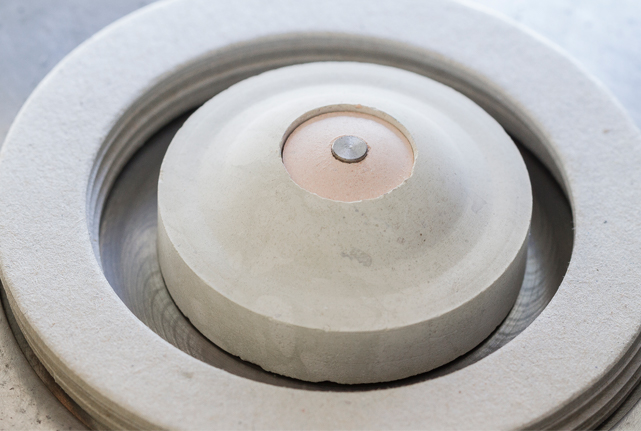

A 2×1000 W Cyberstar image furnace (C2MA-MCBT tech group) allows to grow various compounds for physical studies. Recently studied systems are Sr-Ru-O oxides, langasites with a frustrated rare-earth network (Pr3Ga5SiO14 and Ba3NbFe3Si2O14)

High-quality single crystals of heavy fermion materials, based on the ternary system: RareEarth – d transition element – p elements such as URu2Si2, CeRh3B2 or CeNi2B2C are grown from the melt for high-resolution angle-resolved photoemission spectroscopy (ARPES).

PLUM Tech group is studying the growth of large periodically-poled KTiOPO4 (PPKTP) crystals from high temperature solutions. We first demonstrated domain growth from a microstructured substrate by liquid phase epitaxy, and aim then to grow large periodically-poled KTiOPO4 crystals. The optimization of physico-chemical conditions and growth kinetics of these domains will be realized by a pulling process from the growth solution: top seeded solution growth method. The growth of non-linear optics crystals doped with luminescent ions will also be carried for the self-converter RbTiOPO4:Er/Yb crystal with ionic charge compensation (Ba2+) on the alkaline site.
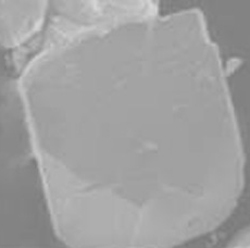
An original rapid growth reactor working in stationary conditions is developed in PLUM. It can accommodate almost any chemical system combining the circulation and in-line treatment (over-heating, ultra-filtration and ultrasounds) of the growth solution to avoid spurious nucleation at high supersaturation applied to reach high growth rates. This method is highly suited to compounds studied in PLUM, such as low-solubility metal iodates (NaI3O8) for non-linear optical properties, and DKDP phosphate solid solutions [K(D(1-x)Hx)2PO4] for the “Laser MégaJoule” facility (collaboration with CEA).

In the field of hydrides (IICE – MCMF group), alkali borohydrides are of particular interest for hydrogen storage due to their high hydrogen storage capacity (ex. LiBH4 contains 18.4 wt% H2). The main drawback is their stability which prevents reversibility in moderate temperature and pressure conditions. Thermodynamical destabilization can be achieved through reactive hydride composites which consist on an intimate mixture of alkali borohydride and a metal hydride. The formation of an intermediate phase lowers the formation enthalpy in comparison with pure borohydride. We focus our study on the system LiBH4– MgH2, and in particular on the role of activators on the reversibility and kinetics of the reaction : 2 LiBH4 + MgH2 ↔ 2 LiH + MgB2 + 4 H2
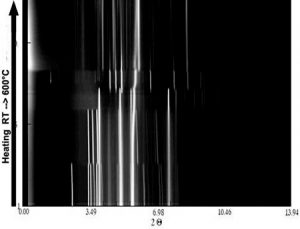
Gas-solid reactions are also used as a crystal growth technique via chemical transport. This method is well suited for binary or ternary oxides of transition metal elements without strongly basic components; it is used to prepare crystals of spinels such as M2GeO4 using HCl or Cl2 as transporting agent.
Institut Néel also possesses two hydraulic presses for high pressure-high temperature (HP-HT) syntheses up to 8 GPa. These are used to stabilize strongly distorted oxides as perovskites with multiferroic properties, and to search for new compounds by exploring phase diagrams of oxides with unusual valence states or coordination, leading to interesting physical/structural properties. PLUM focuses on solid solutions between 3d metals on the B-site of Bi, Pb or rare-earth containing distorted perovskites. HP-HT chemistry is also applied to the preparation of new superconducting compounds as (Ba, K)Fe2As2.
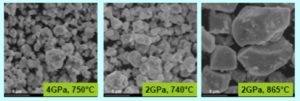
Institut Néel is equipped with a large range of resistive and induction furnaces, that allows an important synthetic solid state chemistry activity including under controlled atmosphere. The studies of solid solutions in magnetic, magneto-optic, multiferroics compounds elaborated in various conditions allows to determine the relations between chemical composition, structure and properties. Recent studies deal with langasites system that show the effect of substitution on several cationic crystallographic sites. Institut Néel is equipped with a large range of resistive and induction furnaces, that allows an important synthetic solid state chemistry activity including under controlled atmosphere. The studies of solid solutions in magnetic, magneto-optic, multiferroics compounds elaborated in various conditions allows to determine the relations between chemical composition, structure and properties. Recent studies deal with langasites system that show the effect of substitution on several cationic crystallographic sites A3BC2D2O14. An other work developed show the possibility to induce ferromagnetism in semiconductors by non-magnetic impurities (SnO2 reacted with K2CO3 at low temperature).
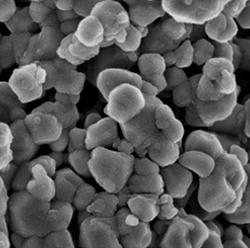
Hydrothermal/solvothermal methods are used by several groups, who develop and share specific autoclaves. The hydrothermal method is used for crystal engineering of metal iodates, that are promising materials for the realization of optical parametric amplifiers and oscillators in the IR range until 12 µm. This method leads to original phases and allows to control the rate of insertion of rare earths in many phases as La(IO3)3, AgGd(IO3)4 or Y(IO3)3.

In the Micro-Nano-Magnétisme group – QUEST Department, nanoporous alumina membranes with honeycomb pore network are synthesized electrochemically under specific anodizing conditions with acidic electrolytes. The resulting membranes are used as templates for the electrochemical growth of soft magnetic (Ni or Co) and thermoelectric nanowires (BiSbTe and BiTeSe) arrays. Magnetic nanowires are studied for magnetic domain wall motion upon application of an external magnetic field or a spin-polarized current. The influence of pore diameter reduction on the magnetostatic interactions has been determined. Thermoelectric nanowire arrays are developed for optimizing their properties in view of power generation applications (collab. Schneider Electric).

Sol-gel chemistry, molecular precursor methods and metal-organic decomposition (MOD) techniques have been selected for their flexibility, scalability and low cost. These wet chemical routes are coupled with various shaping techniques : spin-coating, dip-coating, spray-drying, spray-pyrolysis for the preparation of thin films or nanoparticles.
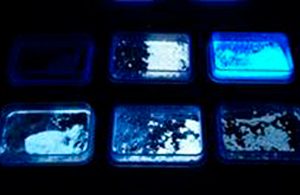
Peptide grafting on hybrid core-shell nanoparticles for in vivo imaging (angiography)
Core-shell hybrid organic-inorganic nanoparticles are prepared through a one step spray-drying process for in vivo two-photon fluorescence imaging. Through the nature of sol-gel precursors, coupled to their hydrolysis and condensation conditions, we favour the preparation of hydrophilic and non-porous silicate shells to improve their in vivo furtivity and their chemical stability. Finally, the silicate shells allow a convenient functionalization by grafting biomolecules as PEG groups or peptides (typically RGD peptides) at their surfaces for targeting in vivo tumor vascular endothelial cells (main collaborations with Grenoble Institut Neuroscience, ENS-Lyon, Lab. Spectrométrie Physique-UGA).
Diamond nanocrystals, exhibiting fluorescent nitrogen-vacancy centers, are also involved in the functionalization of optical tips. The aim is to develop high-resolution nano-source of photons for near-field optical microscope by grafting on the tip apex small diamond nanocrystals, 20nm in diameter, yielding to very stable and efficient fluorescence.
To develop diamond-based biosensensors, the Semiconducteurs Grand Gap team is optimizing wet chemical routes for localized electrochemical and chemical surface functionnalization with biomolecules (proteins, enzymes, ADN) on boron-doped diamond and carbon nanotubes. This novel chemical process for biofunctionnalization as localized chemical spots on a diamond surface opens the way to easier grafting of monomolecular layers of proteins, enzymes, ADN and other organic molecules in one step very close to the diamond surface.
In the framework of studies of electronic transport through single molecules, new mesoscopic phenomena, and quantum effects at the single-molecule level to develop molecular spintronics, QUEST department is developing carbon nanotube (CNT)-based quantum devices for molecular spin detection in a nanoSQUID configuration. This requires surface functionalization by aminosilanes in order to deposit the nanotubes in a controllable way, and is carried out in specific nanochemistry equipment and reactors, such as CVD growth facilities for CNTs and a vapour phase silanization apparatus.
